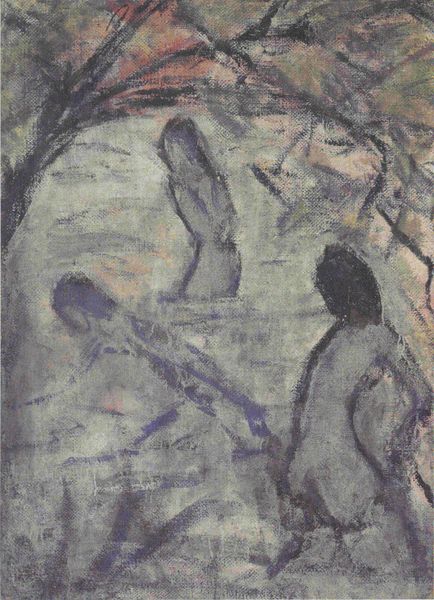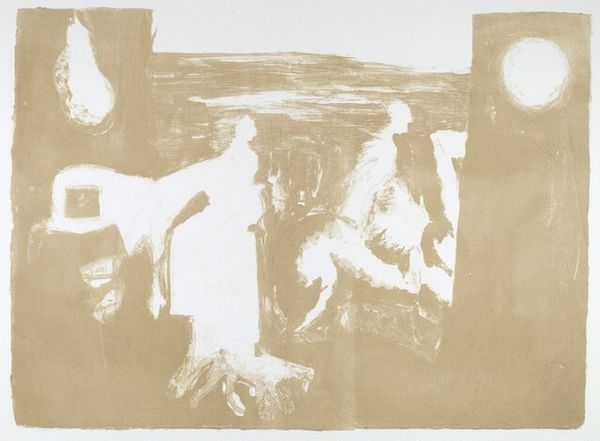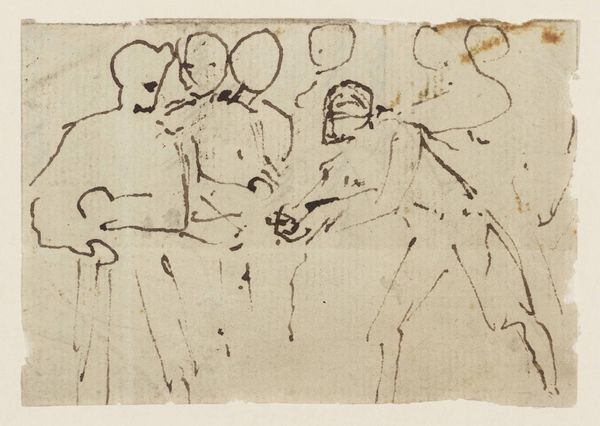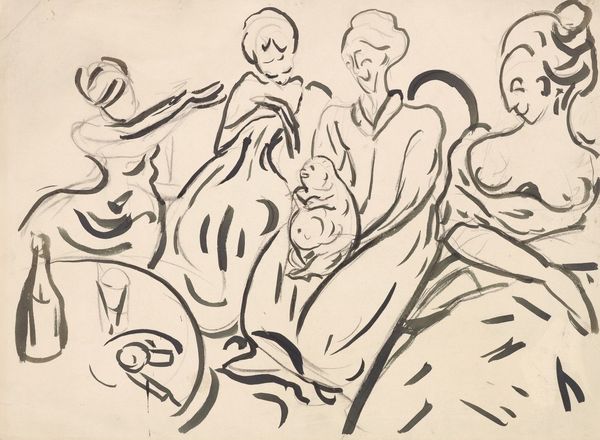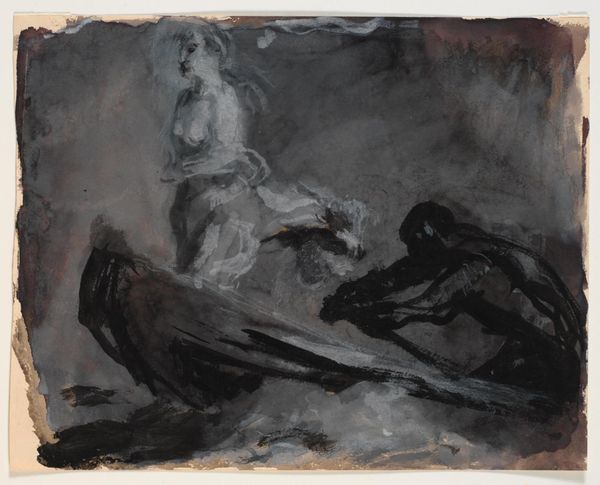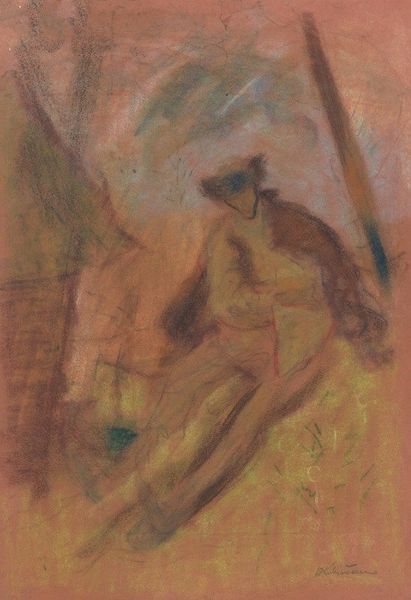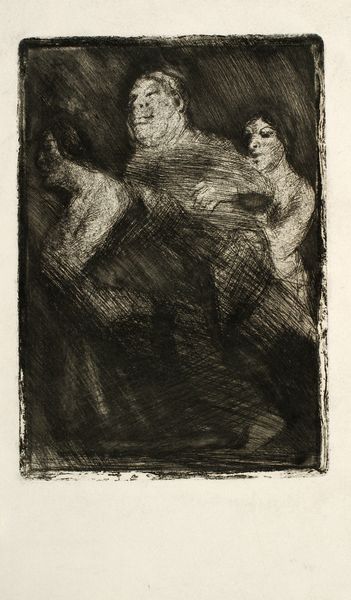
Copyright: Public Domain: Artvee
Editor: This is "Tod als Jongleur," or "Death as Juggler," created by Christian Rohlfs in 1935. The muted palette and rather frantic lines create a palpable sense of anxiety and unease, I find it so striking. What underlying stories do you see in this work? Curator: Immediately, I’m drawn to the historical context. Painted in 1935, on the precipice of the Second World War, this work speaks to the looming dread and the increasing awareness of mortality. Do you see how the "juggler," or Death, isn’t a triumphant figure, but almost emaciated and fragile? Editor: Yes, he seems skeletal. So you're saying that Death's fragility emphasizes the universal feeling of precarity at the time? Curator: Precisely. This links to Expressionism, Rohlfs's art movement, which visually externalizes inner turmoil. Consider, too, how the faces on the right, seemingly witnesses, express abject fear. It is not simply about death as a biological event, but as a pervasive cultural anxiety. What emotional weight do you feel emanates from the colour choices here? Editor: The use of pastels is interesting; such gentle colours, yet applied so forcefully... Is it ironic? Curator: Perhaps it is ironic, yes. Or perhaps it speaks to a resignation. Death isn't necessarily a dramatic event but an inevitability. The symbols resonate in the viewer’s psyche, stirring anxieties both personal and collective. It's a fascinating interplay, no? Editor: It is. I initially focused on the aesthetic anxiety but understanding the historical context and Rohlfs' artistic choices provides such a richer interpretation. Thank you! Curator: My pleasure. Seeing these artworks from an iconographic perspective helps us recognize how symbols persist and transform across time and culture, offering new ways to interpret history.
Comments
No comments
Be the first to comment and join the conversation on the ultimate creative platform.

